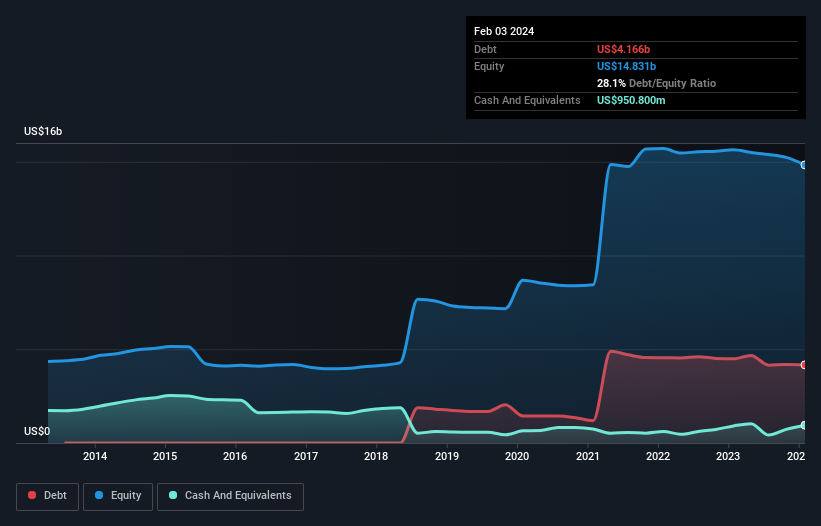Is Marvell Technology (NASDAQ:MRVL) Using Too Much Debt?
Some say volatility, rather than debt, is the best way to think about risk as an investor, but Warren Buffett famously said that 'Volatility is far from synonymous with risk.' So it seems the smart money knows that debt - which is usually involved in bankruptcies - is a very important factor, when you assess how risky a company is. We can see that Marvell Technology, Inc. (NASDAQ:MRVL) does use debt in its business. But the real question is whether this debt is making the company risky.
What Risk Does Debt Bring?
Debt and other liabilities become risky for a business when it cannot easily fulfill those obligations, either with free cash flow or by raising capital at an attractive price. Part and parcel of capitalism is the process of 'creative destruction' where failed businesses are mercilessly liquidated by their bankers. However, a more common (but still painful) scenario is that it has to raise new equity capital at a low price, thus permanently diluting shareholders. Having said that, the most common situation is where a company manages its debt reasonably well - and to its own advantage. When we examine debt levels, we first consider both cash and debt levels, together.
Check out our latest analysis for Marvell Technology
How Much Debt Does Marvell Technology Carry?
As you can see below, Marvell Technology had US$4.17b of debt at February 2024, down from US$4.49b a year prior. However, because it has a cash reserve of US$950.8m, its net debt is less, at about US$3.22b.
A Look At Marvell Technology's Liabilities
The latest balance sheet data shows that Marvell Technology had liabilities of US$1.81b due within a year, and liabilities of US$4.58b falling due after that. Offsetting these obligations, it had cash of US$950.8m as well as receivables valued at US$1.12b due within 12 months. So it has liabilities totalling US$4.32b more than its cash and near-term receivables, combined.
Since publicly traded Marvell Technology shares are worth a very impressive total of US$58.2b, it seems unlikely that this level of liabilities would be a major threat. But there are sufficient liabilities that we would certainly recommend shareholders continue to monitor the balance sheet, going forward. When analysing debt levels, the balance sheet is the obvious place to start. But it is future earnings, more than anything, that will determine Marvell Technology's ability to maintain a healthy balance sheet going forward. So if you're focused on the future you can check out this free report showing analyst profit forecasts.
Over 12 months, Marvell Technology made a loss at the EBIT level, and saw its revenue drop to US$5.5b, which is a fall of 6.8%. We would much prefer see growth.
Caveat Emptor
Over the last twelve months Marvell Technology produced an earnings before interest and tax (EBIT) loss. To be specific the EBIT loss came in at US$437m. When we look at that and recall the liabilities on its balance sheet, relative to cash, it seems unwise to us for the company to have any debt. Quite frankly we think the balance sheet is far from match-fit, although it could be improved with time. We would feel better if it turned its trailing twelve month loss of US$933m into a profit. So we do think this stock is quite risky. For riskier companies like Marvell Technology I always like to keep an eye on whether insiders are buying or selling. So click here if you want to find out for yourself.
When all is said and done, sometimes its easier to focus on companies that don't even need debt. Readers can access a list of growth stocks with zero net debt 100% free, right now.
Have feedback on this article? Concerned about the content? Get in touch with us directly. Alternatively, email editorial-team (at) simplywallst.com.
This article by Simply Wall St is general in nature. We provide commentary based on historical data and analyst forecasts only using an unbiased methodology and our articles are not intended to be financial advice. It does not constitute a recommendation to buy or sell any stock, and does not take account of your objectives, or your financial situation. We aim to bring you long-term focused analysis driven by fundamental data. Note that our analysis may not factor in the latest price-sensitive company announcements or qualitative material. Simply Wall St has no position in any stocks mentioned.

